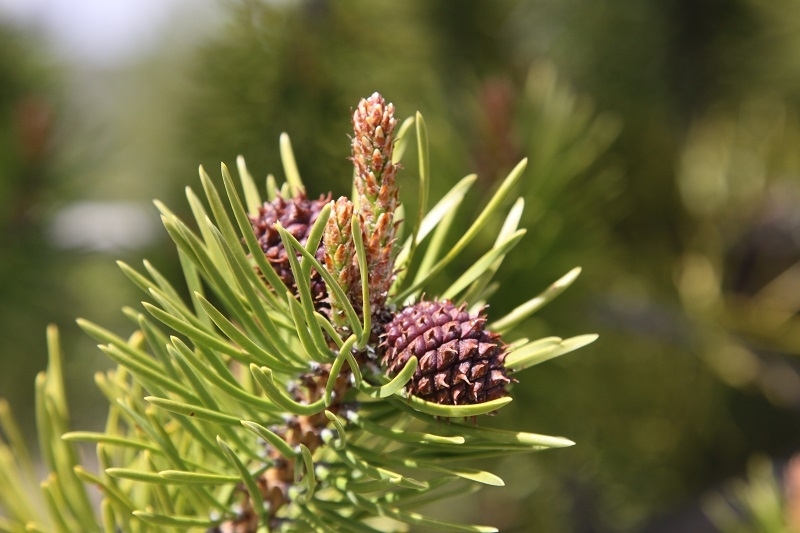The Sex Life of Xmas Trees
Published: 17/02/21 By: Mike Bekin
Although Christmas is done and dusted for another year, it’s worth taking some time to appreciate the trees that have become synonymous with the way we celebrate the festive season.
Fir trees, spruce trees, and pine cones make up much of our indoor decorations throughout the festive period.
While we might adorn them all with baubles, glitter, and sparkles, the pine cones that generally become the stars of our door wreaths and table dressings have a far more important job to carry out and they tell an old story, millions of years old, of advancement, competition as well as reproduction.
Pine cones aren't just for decoration, they are the reproductive body organs of conifers, an ancient group of seed-bearing plants.
There are two different types of cone:
There are seed cones (female) and pollen cones (male). The pollen cones or male cones are usually smaller sized, as well as much less evident than the seed cones.
Seed cones grow to much bigger proportions and generally take around three years to establish and launch their seeds, so you can often see pine cones at different phases of growth on a single tree.
Seen under a microscope, a male cone generates large amounts of tiny plant pollen grains that will be picked up by the wind and sent on their way to find the seed cones. What most people recognize as a pine cone is typically the female seed cone.
Their intricate framework keeps the immature male seeds safe and free from risk located in between their strong scales.
The beginning
Early in their growth, the scales of the female cones open slightly for a short time to grant access to windborne male pollen launched from the pollen cones. Softwood trees, also known as Conifers are primarily wind-born pollinators, transmitting massive quantities of pollen into the air throughout summer months.
You will often see this pollen over parked cars or on windowsills in the form of a fine yellow powder – or if you are a hayfever sufferer you will know it is in the air!
Out into the world
After getting the pollen in, the female cones close back up until the seeds are fertilized and fully grown.
Once they are, the scales reopen allowing the wind to distribute the winged seeds to be blown free. Depending on the size of the seed their distribution can depend on birds or animals to spread the future generation of trees.
Effect of fire
In some woodlands, mature pine cones might remain hibernating for years. Certain species, such as the lodgepole pine will only open when exposed to extreme temperatures, for example, the heat of a forest fire.
These trees can wait until the fire has minimized and supplied a much-needed increase in nutrients to the soil, often made by previous competitors, before sprouting their seeds out to take root.
Disappearing conifers
Conifers are some of the earliest plants ever found in the woodlands and they were far more varied than today. Currently, only 0.3% of all the types of seed plants have cones. Flowering plants have diversified more successfully and taken control of the majority of the warmer, wetter environments – pushing out the conifers.
Conifers are relegated to locations where flowering plants can not easily survive, but where a conifer's anatomy enables them to stand up to damage brought on by freezing temperatures. Conifers additionally pack their fallen leaves with terpenoids, which allows the trees to stand up to decay as well as starving herbivores.
While they might no longer be as varied as they were or as flashy as their blooming cousins, conifers are still able to hold their own, especially around Xmas time.
They’re also responsible for the vast majority of the wood in our homes, given that they grow quicker than fruit-bearing trees (hardwoods) – you’ll find them in floor and roof joists, mouldings, as well as exterior decking and cladding.
We at Ecochoice love the history of trees and are always happy to promote both softwood and hardwood solutions to your exterior project requirements.
Image: Aj. Jareerat / Shutterstock.com
